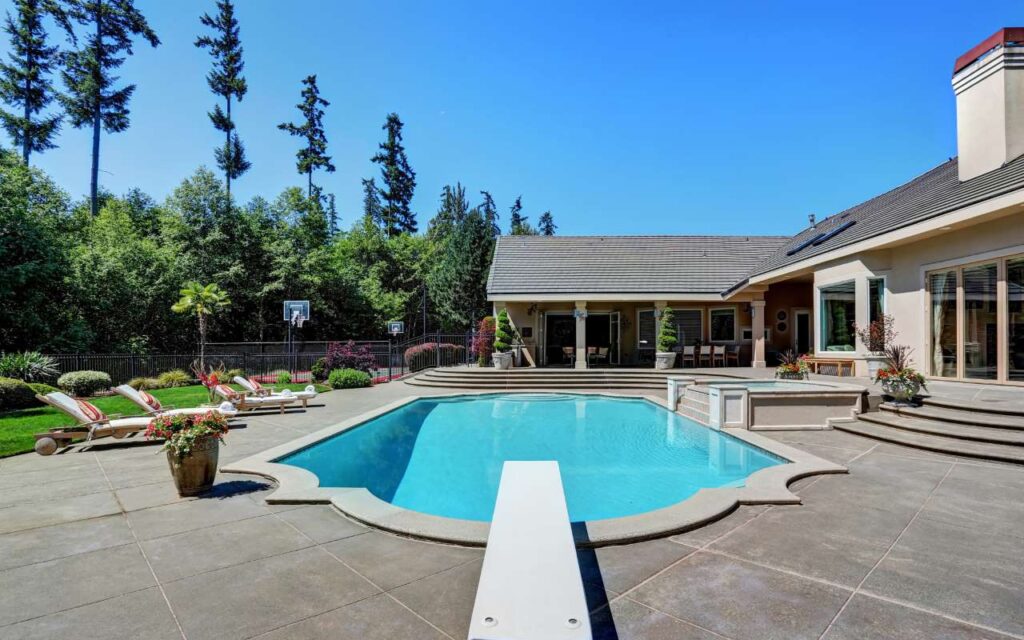Climate-Resilient Pool Systems for Flood-Prone Areas
Discover innovative climate-resilient pool systems designed for flood-prone areas, ensuring safety, sustainability, and enjoyment for homeowners.
As climate change continues to influence weather patterns globally, flood-prone areas are becoming increasingly common. Homeowners in these regions face unique challenges, particularly when it comes to maintaining outdoor spaces such as swimming pools. Traditional pool systems may not withstand the harsh realities of flooding, leading to costly repairs and potential hazards. This blog post delves into climate-resilient pool systems designed specifically for flood-prone areas. We will explore their significance, features, benefits, and practical steps for implementing these systems effectively.
The Importance of Climate-Resilient Pool Systems
– Climate Change and Increased Flood Risk: Unpredictable weather patterns and rising sea levels have intensified the risk of flooding in many regions. According to the National Oceanic and Atmospheric Administration (NOAA), the frequency of heavy rainfall events has increased significantly in the last decade, raising concerns for homeowners with swimming pools. – Economic Considerations: Maintaining a traditional pool in a flood-prone area can be a financial burden. Homeowners often face expensive repairs, higher insurance premiums, and potential loss of property value. Climate-resilient pool systems offer a way to mitigate these risks, potentially saving homeowners thousands in the long run.- Safety First: Flooding poses safety risks, not just to the pool itself but also to those using it. Implementing climate-resilient systems can help ensure the safety of your family and guests.By understanding the importance of these systems, homeowners can make informed decisions that protect their investments and enhance their outdoor living spaces.
Key Features of Climate-Resilient Pool Systems
– Elevated Design: One of the primary features of climate-resilient pools is their elevated design. By placing the pool above potential flood levels, homeowners can significantly reduce the risk of water damage. This design is particularly effective in areas prone to heavy rainfall and flash flooding.- Durable Materials: Climate-resilient pool systems utilize materials that can withstand harsh conditions, such as high winds and heavy rain. Fiberglass and reinforced concrete are popular choices, as they offer durability and longevity.- Integrated Drainage Systems: A crucial component of flood-resilient pools is their drainage systems. These systems ensure that excess water is directed away from the pool area, preventing flooding and water accumulation. This can include the use of French drains, sump pumps, and proper grading around the pool.- Flexible Liners: Some climate-resilient pools utilize flexible liners that can adapt to changes in water levels without cracking or breaking. This feature enhances the pool’s ability to withstand fluctuating conditions.- Water Management Solutions: Innovative water management solutions, including rainwater harvesting systems, can be integrated with climate-resilient pools. These systems collect and utilize rainwater for pool filling and maintenance, promoting sustainability.The combination of these features not only enhances the longevity of the pool but also ensures that it remains a safe and enjoyable space during adverse weather conditions.
Benefits of Implementing Climate-Resilient Pool Systems
– Reduced Maintenance Costs: By investing in a climate-resilient pool system, homeowners can reduce the frequency and cost of maintenance. The durability of materials and design minimizes the need for repairs after flooding events.- Increased Property Value: Homes equipped with resilient outdoor spaces, including pools, often see an increase in property value. Potential buyers are attracted to homes that offer safety and sustainability features.- Enhanced Enjoyment: A climate-resilient pool allows homeowners to enjoy outdoor living spaces without the constant worry of flooding. Families can spend quality time together in a space designed for safety and fun.- Environmental Benefits: Integrating sustainable practices, such as rainwater harvesting, promotes environmental stewardship. Homeowners contribute positively to their communities and ecosystems by reducing runoff and conserving water.- Peace of Mind: Knowing that your pool is equipped to handle extreme weather conditions provides peace of mind. Homeowners can rest easy, confident that their investment is protected.These benefits make climate-resilient pool systems a wise investment for homeowners in flood-prone areas.
Practical Steps to Implement Climate-Resilient Pool Systems
– Conduct a Site Assessment: Before installing a climate-resilient pool system, it’s essential to conduct a thorough site assessment. This evaluation helps identify flood risk levels, soil conditions, and drainage patterns. Engaging with a professional can provide valuable insights into the best design for your property.- Choose the Right Design and Materials: Based on the assessment, homeowners can select a design and materials that best suit their needs. Elevated designs with durable, weather-resistant materials should be prioritized.- Incorporate Advanced Drainage Solutions: Proper drainage is critical in flood-prone areas. Homeowners should consider installing integrated drainage systems that effectively manage excess water, ensuring the pool area remains dry and safe.- Utilize Professional Services: Working with experienced pool contractors who specialize in climate-resilient designs is essential. They can offer expertise in selecting materials, designing the layout, and ensuring compliance with local regulations.- Regular Maintenance and Upkeep: Once the pool is installed, regular maintenance is crucial. Homeowners should routinely check drainage systems, inspect for wear and tear, and ensure that all components function as intended. Preventive maintenance can help avoid major repairs down the line.- Stay Informed About Local Regulations: Flood-prone areas often have specific regulations governing pool installations. Homeowners should stay informed about local codes and requirements to ensure compliance and safety.By following these practical steps, homeowners can successfully implement climate-resilient pool systems that enhance their outdoor spaces while providing safety during extreme weather events.
Case Studies: Successful Implementation of Climate-Resilient Pools
– Case Study 1: Florida: In a coastal community in Florida, a homeowner invested in an elevated pool system designed to withstand hurricane conditions. The pool was placed on a raised deck with a sophisticated drainage system that redirected stormwater away from the property. After several heavy storms, the pool remained intact and functional, demonstrating the effectiveness of climate-resilient designs.- Case Study 2: Texas: A family in Texas faced frequent flooding due to heavy rains. They opted for a reinforced concrete pool with a flexible liner. Additionally, they installed a rainwater harvesting system that collected runoff for pool maintenance. This innovative approach not only protected their investment but also provided them with a sustainable solution for pool upkeep.- Case Study 3: California: In a wildfire-prone region of California, a homeowner designed a pool with fire-resistant materials and an integrated water management system. This pool not only served as a recreational space but also acted as a firebreak during wildfire seasons. By combining flood resilience with fire safety, the homeowner maximized the pool’s utility.These case studies illustrate the successful implementation of climate-resilient pool systems, showcasing their benefits and versatility in various environments.
The Future of Climate-Resilient Pool Systems
As climate change continues to affect weather patterns, the demand for climate-resilient pool systems will likely grow. Innovations in materials and technology will further enhance these systems’ effectiveness, making them even more appealing to homeowners in flood-prone regions.- Technological Advancements: The future may see the incorporation of smart technology in pool systems. Sensors could monitor water levels and alert homeowners to drainage issues before they escalate into significant problems.- Sustainable Practices: The ongoing push for green construction will drive the development of more sustainable pool systems. This could include the use of recycled materials, energy-efficient heating, and advanced filtration systems that minimize chemical use.- Community Initiatives: As awareness of climate change increases, communities may come together to promote resilient infrastructure. Local governments might offer incentives for homeowners to install climate-resilient pools, contributing to a safer and more sustainable environment.The evolution of climate-resilient pool systems will continue to shape outdoor living spaces, ensuring that homeowners can enjoy their pools regardless of climate challenges.
Conclusion
In summary, climate-resilient pool systems represent an essential investment for homeowners in flood-prone areas. With the increasing frequency of severe weather events, the need for durable, safe, and sustainable outdoor spaces has never been more critical. By understanding the importance of these systems, their key features, and the practical steps for implementation, homeowners can protect their investments while enhancing their quality of life.As climate change continues to pose challenges, innovative solutions like climate-resilient pools will play a crucial role in creating safe and enjoyable outdoor environments. If you’re considering upgrading your pool system to be more resilient against flooding, explore the options available and take proactive steps to safeguard your home and family. For those looking to enter the pool maintenance business, consider exploring
Pool Routes For Sale and connect with
Superior Pool Routes for comprehensive training and support. With expertise in the field and a commitment to sustainability, you can navigate the challenges of a changing climate while providing valuable services to your community.



